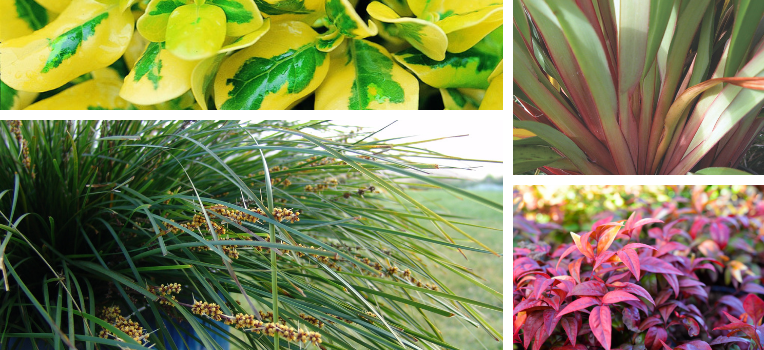Gardening 101: Tips for the neglectful gardener
Do you want a beautiful garden, but find yourself short on time to give it the attention it deserves? Perhaps you've tried gardening in the past and, through being busy or distracted, you've lost your plants. Or maybe you have a holiday house that is only inhabited periodically. With clever plant selection, even the most forgetful, absent, neglectful gardener can have their own lush, green expanse. Better yet, if plants are potted, you can take them with you if ever you need to move!
Our top pick
Neglectful gardeners - meet your new favourite plant. The ponytail palm (Beaucarnea recurvata) rarely needs much attention after planting. Not actually a palm at all, this plant is self-sufficient and long-lived. It has a large, bulbous base that stores nutrients in good times and buffers it against drought or a neglectful gardener. The common name 'ponytail' comes from its tuft of green leaves (like a ponytail) that erupt from the large base.
Ponytails grow well in the ground or in a pot, but remember to allow room for the large base to expand as the plant grows. One of the only times it causes anxiety is when, after years and often decades of growth, it produces a spire of white flowers. Ponytail owners worry that their much-loved and long-lived plant may die after flowering, but don't fret - it will continue to grow. As well, small plants, known as pups, often develop around the plant and these can give rise to new plants.
More tough-love garden plants
Other succulent plants can also tolerate neglect as, like the ponytail, they store their own supplies. Frangipani, agave and crassulas are all set-and-forget plants that are ideal for neglectful gardeners or for gardens that are left untended for periods of time.
As well as these succulent-style plants, many common garden plants can withstand a little neglect once they are established and have developed a strong root system. Groundcovers, bulbs, shrubs and trees are all able to grow without much intervention, especially in areas with regular rainfall.
Top of the resilient list for garden plants that take neglect are nandina, coprosma, Indian hawthorn, lomandra, dianella and many camellias. Many native plants also survive well with occasional periods of neglect. It must be noted, however, that all plants grow better, look better and flower better with additional watering especially when it is dry or hot, and an application of fertiliser at least once a year.

Clockwise from top left: Coprosma green and gold, Dianella 'Tas Red', Nandina domestica 'Nana Blush', Lomandra 'Tanika'.
Self-sufficient indoor plants
For indoor gardeners, the ultimate plant for tolerating neglect is the ZZ plant or Zanzibar Gem (Zamioculcas zamiifolia). Much like the ponytail palm mentioned above, the ZZ plant stores its own nutrients in its bulbous roots. This means it survives well, even if its soil dries out between waterings.
A word of caution...
Just because some plants can cope with minimal care, doesn't mean you should ignore your garden completely. Plants that become neglected may suffer pest or disease attack, can dieback and may have poor flowering. They may also become overgrown with weeds, which are one group of plants that do thrive on neglect!
You can usually return neglected garden plants to good health quite simply. Give the plant a light prune, watering and an application of slow release fertiliser, and remove any invading weeds. Water plants thoroughly and then lay down a layer of organic mulch as well. This can both aid with water retention (allowing for longer breaks between watering) and reduce weed competition.
Plants in pots are more dependent on regular care than plants growing in the ground, but even they can be set up to be left untended for periods of time. Using a good quality potting mix that includes slow-release fertiliser and water storage crystals (or adding these products to a cheaper mix) will allow plants to be watered less frequently and still survive.


